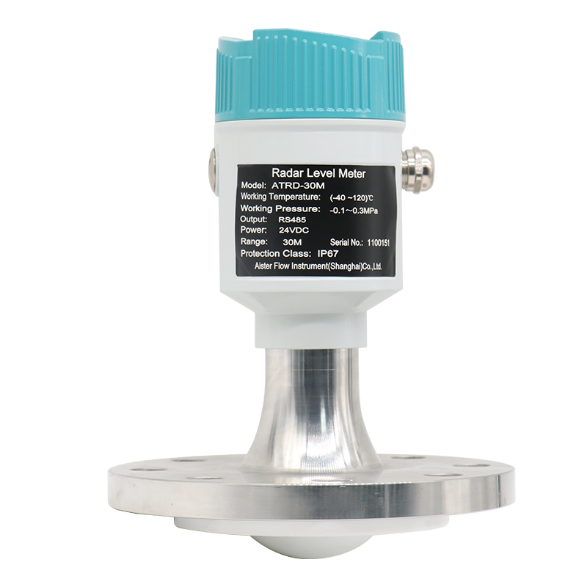Interference factors of abnormal signal of radar level gauge
2023-12-18
Radar level meter is to measure the transmitting and receiving time interval of signal by transmitting electromagnetic wave to the measured medium, so as to calculate the distance between the antenna and the measured medium surface. However, in daily work, it is often encountered that the signal is abnormal, which is often caused by various interference factors. So, what are the interference factors that affect the normal operation of the radar level gauge signal?
Through the analysis of the factors that lead to the abnormal signal of radar level gauge, these factors can be roughly divided into two categories: external interference and internal interference.
External interference
Celestial and celestial interference:
Celestial bodies, including the Sun and other stars, emit electromagnetic waves that can interfere with radar level gauge signals.
Sky electricity refers to the effect of ionizing effects such as the atmosphere, lightning, or electromagnetic waves generated by natural phenomena such as volcanoes and earthquakes on signals.
Light interference:
Semiconductor components are sensitive to light, and the influence of light may lead to changes in the conductivity of semiconductor components, thus affecting the normal use of radar level gauges.
Thermal interference:
The heat generated during the operation of the thermal power plant may cause the change of the surrounding temperature, which will affect the radar level meter element and lead to inaccurate measurement and other problems.
Humidity interference:
High humidity may lead to the decrease of insulator resistance and the increase of dielectric dielectric number, which will affect the performance of radar level meter.
Mechanical interference:
The vibration or shock of the external machine may cause vibration, displacement or deformation of the internal components of the radar level gauge, resulting in measurement errors.
Chemical interference:
Corrosive gases such as acids and alkalis may damage the instrument and internal components, conduct electricity with metals, and affect the normal operation of radar level gauges.
Internal interference
Internal interference originates from inductors, capacitors, conductors, power transformers, etc., between the internal components of the radar level gauge. The improved radar level meter adopts high frequency microwave technology, the performance is improved, and the internal interference is reduced.

In general, understanding and preventing these interference factors helps to ensure the stability and accuracy of radar level gauge signals. By using partitions, shock absorbing springs and other means, the influence of mechanical interference can also be slowed down to a certain extent.
Through the analysis of the factors that lead to the abnormal signal of radar level gauge, these factors can be roughly divided into two categories: external interference and internal interference.
External interference
Celestial and celestial interference:
Celestial bodies, including the Sun and other stars, emit electromagnetic waves that can interfere with radar level gauge signals.
Sky electricity refers to the effect of ionizing effects such as the atmosphere, lightning, or electromagnetic waves generated by natural phenomena such as volcanoes and earthquakes on signals.
Light interference:
Semiconductor components are sensitive to light, and the influence of light may lead to changes in the conductivity of semiconductor components, thus affecting the normal use of radar level gauges.
Thermal interference:
The heat generated during the operation of the thermal power plant may cause the change of the surrounding temperature, which will affect the radar level meter element and lead to inaccurate measurement and other problems.
Humidity interference:
High humidity may lead to the decrease of insulator resistance and the increase of dielectric dielectric number, which will affect the performance of radar level meter.
Mechanical interference:
The vibration or shock of the external machine may cause vibration, displacement or deformation of the internal components of the radar level gauge, resulting in measurement errors.
Chemical interference:
Corrosive gases such as acids and alkalis may damage the instrument and internal components, conduct electricity with metals, and affect the normal operation of radar level gauges.
Internal interference
Internal interference originates from inductors, capacitors, conductors, power transformers, etc., between the internal components of the radar level gauge. The improved radar level meter adopts high frequency microwave technology, the performance is improved, and the internal interference is reduced.

In general, understanding and preventing these interference factors helps to ensure the stability and accuracy of radar level gauge signals. By using partitions, shock absorbing springs and other means, the influence of mechanical interference can also be slowed down to a certain extent.
Share To:
Previous Post:
News
- Why is the thermal gas mass flowmeter not affected by pressure strength and temperature?
- What to do when a thermal gas mass flow meter fails?
- How are thermal gas mass flow meters used? What are the applications?
- Under what circumstances is the gas measurement need to be regulated compensated vortex flowmeter
- Why Is The Aister Thermal Gas Mass Flowmeter So Popular ?
- Gas turbine flowmeter manufacturers explain their main advantages in measurement
- Gas turbine flowmeter manufacturer Aister instrument field experience summary
- Aister Instrument Empowerment Conference








